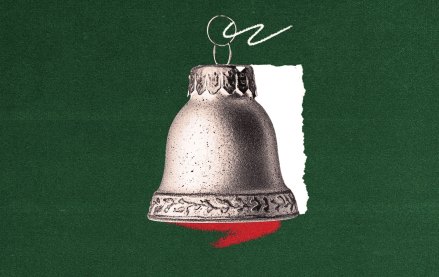Zero-click search is changing how small brands show up online — and spend

As a Digiday+ member, you were able to access this article early through the Digiday+ Story Preview email. See other exclusives or manage your account.This article was provided as an exclusive preview for Digiday+ members, who were able to access it early. Check out the other features included with Digiday+ to help you stay ahead
AI is on the cusp of upending the way people search and discover information online. For small to mid-sized brands, that means rethinking not just how they show up, but what teams (and what budgets) are responsible for the work.
Historically, paid search was a performance game, focused on keywords, page optimization and rankings. AI-powered search tools like ChatGPT and Google AI Overviews, however, have flipped the script. As people ask search engines conversational questions instead of keywords, the lines are blurring between search as a performance function and as an awareness channel, according to two marketing execs Digiday spoke with for this piece.
“In my mind, the performance and brand world is really starting to intersect together and we have to start being more data-driven around: how is this meeting the overall goals of the business?” said Katya Constantine, CEO of performance marketing agency DigiShop Media.
In other words, to appease the AI powers that be (a la the page crawlers that populate these AI engines), brands are prioritizing things like blogs, brand content and landing pages in addition to external brand narrative. For example, what gets picked up in a chatbot result could stem from a press mention or affiliate article.
Case in point: Tamara Rosenthal, vp of marketing at Taskrabbit, said press releases and content quoting execs have played a bigger role in having consumers discover the brand. Now, the online marketplace brand is optimizing announcements by ensuring content directly answers questions people may be asking AI chat bots and adding more detailed information to its existing content so it’s better understood by search tools. And that’s not just for traditional media pick-up, but also for how the brand may appear in AI summaries, AI chatbot tools to ensure “brand-aligned narratives surface,” Rosenthal said in an email to Digiday.
That takes the organic SEO strategy from a strictly performance-driven channel to a blend of performance and brand marketing as brands work to create a consistent narrative across search channels.
As the strategy shifts, expect dollars to follow soon. It’s too early for most brands to start allocating big chunks of their spend to SEO strategy, per the execs, especially as economic headwinds make marketing budgets more precious than ever. However, Tom Telford, chief digital officer at Clarity Global, a digital marketing and communications agency, said the agency has been nudging clients to connect the dots across performance and brand teams.
“It comes back to a joint objective between PR and marketing and then advertising, [because] everyone has to be trying to do the same thing,” he said.
Even if brand teams align their efforts, nailing down what’s actually working in AI-driven environments remains a challenge. For one, there’s the question of measurement and attribution.
Attribution has already been a point of contention for marketers operating in an increasingly fragmented marketplace. AI has only made for another stumbling block, said brand marketers like Bryan Demaranville, CEO of Melinda Maria, an L.A.-based jewelry brand.
“We’ve seen products rise and whether we attribute it to traditional SEO or whether we attribute it to the AI we don’t really know where it comes from,” he said.
Welcome to the era of zero-click, in which users stop their search journey in Google AI Overviews or within AI-powered chatbots without clicking an external link to a product page or brand website. For brands, there’s been a trickle of traffic from ChatGPT, but the changes in how people search for information has made attribution that much harder. According to Jeffrey Lee, CEO and co-founder of DIBS beauty brand, an estimated .02% of the brand’s traffic is coming directly from ChatGPT.
That said, small to medium-sized businesses like Melinda Maria and DIBS beauty brand are continuing to invest in traditional SEO while treating AI as a test-and-learn sandbox.
“First of all, there’s still room for SEO. It’s not mutually exclusive, how you approach ranking in a GEO [generative engine optimization] or an AEO [answer engine optimization],” said Lee, adding “We can only play the game that we know while constantly testing.”
It’s not that brands are sitting on their hands, but AI-powered search isn’t dealing a direct blow to advertisers in the same way that it is to publishers, who rely on web traffic for ad revenue. These businesses may lose some organic traffic, but the focus is shifting toward building an authoritative brand narrative in zero-click environments. In a world where it’s getting harder to drive clicks, digital teams are tasked with optimizing content across a variety of content types in hopes to show up in the AI answer box.
“We’re figuring this out as we go and none of the platforms are making it easy,” DigiShop Media’s Constantine said. “It’s all about consistency now.”
More in Marketing

Pandora is betting on AI agents to scale service and emotional selling during the peak holiday season
Pandora is using AI agents to scale customer service and replicate emotional in-store selling online, just as peak season puts pressure on margins and teams.

Rembrand’s CEO wants to grow virtual ad placements in streaming, and he’s looking elsewhere for models
Omar Tawakol wants to improve advertising within the streaming world, and is working with advertisers and publishers to improve that experience.

Marketers are keen to use generative AI in ad campaigns, but hidden costs lurk
Marketers across the industry want to use AI to cut down on time spent in creative production. It’s not so simple in practice.







